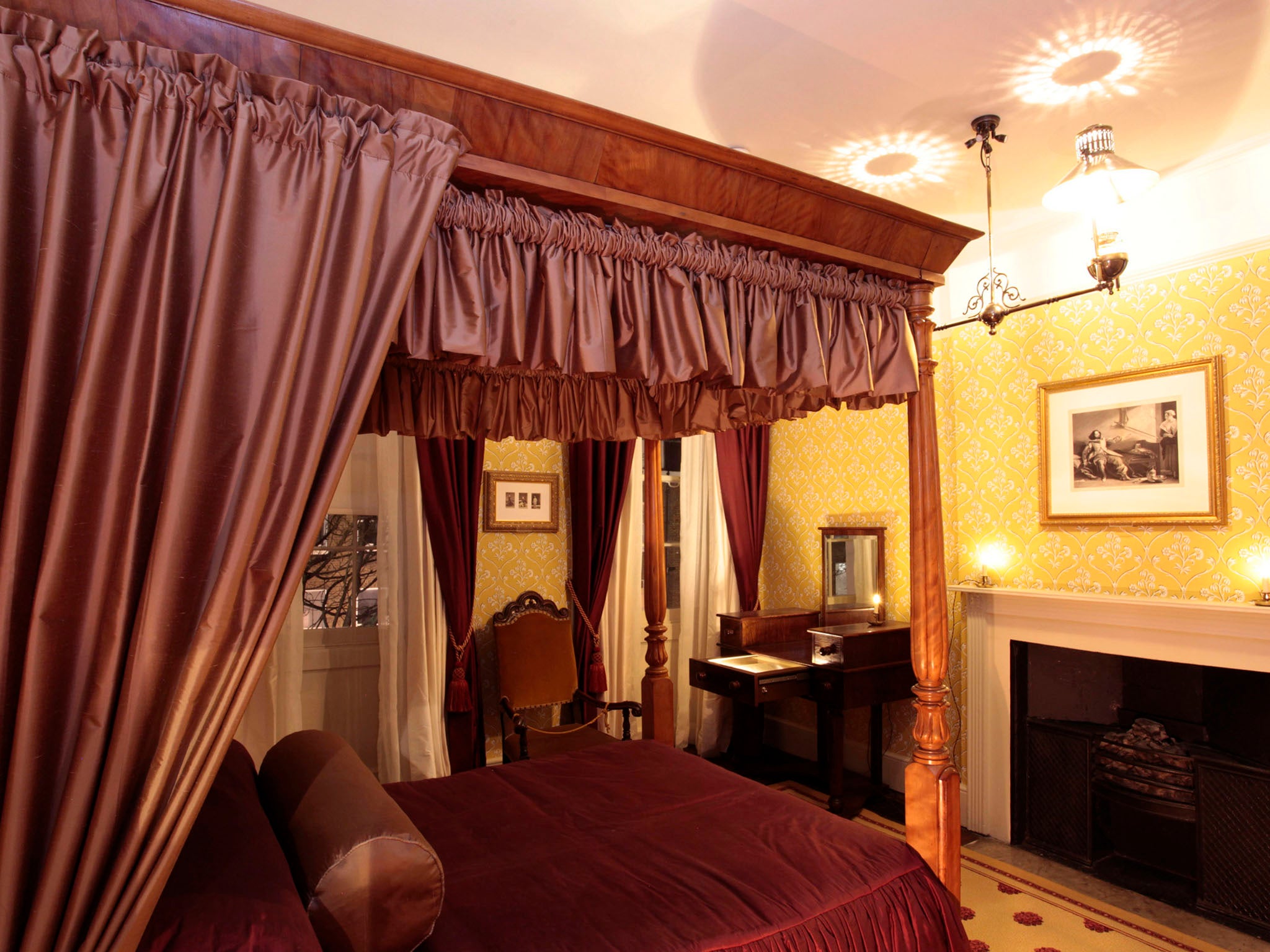Dickens' house opens for Christmas after revamp

The London townhouse where Charles Dickens penned "Oliver Twist" and fathered two of his 10 children has just reopened after a 3.1 million pound ($5 million) facelift as the climax of the bicentenary of his birth.
The Georgian edifice in Bloomsbury, now the Charles Dickens Museum, has been refurbished in time for Christmas, a tradition that the author helped develop with his 1843 novel "A Christmas Carol."
"Dickens didn't exactly invent Christmas, but he was instrumental in shaping Christmas as we celebrate it today," museum director Florian Schweizer, 35, said.
"A Christmas Carol" and related stories and books "redefined the way people go into Christmas: They think about others, about philanthropy, about charity as a key component," Schweizer said.
The museum has been refurbished mainly with lottery money: The Heritage Lottery Fund gave 2.4 million pounds. Coaxed by the Dickens bicentenary, other donors gave the rest, including the Wolfson and Garfield Weston foundations.
Before, the museum was "a very static environment, with a few display cases scattered about, and random objects put inside," plus linoleum flooring, Schweizer said.
"What we now have is a themed, atmospheric museum," he says. "You can read information about Dickens, but you can also just enjoy the space as a beautiful re-creation of a Victorian interior."
Dickens, then 25, rented the house for 80 pounds in 1837. It was located near the staid law offices of Chancery Lane, as well as the seedy thieving dens that inspired the character of Fagin (in "Oliver Twist").
"With the success and the money that he'd earned from the publication of 'The Pickwick Papers,' Dickens could move up the social ladder," says Schweizer. "He was gladly accepted by the landlord, because Boz, his pen name, was a very strong currency at the time."
Dickens described the house as a "frightfully first-class family mansion, involving awful responsibilities." It consisted (as now) of six rooms on three floors, three attic rooms and a basement, and was on a portered, gated street. Dickens employed a cook, a housemaid, a nurse, and a manservant or groom, according to his cash-book of household expenses.
The tour starts in the small, ground-floor dining room, where Dickens, a bon vivant, threw dinners so lavish they looked unaffordable.
On the dining table are blue China plates picturing regular attendees, including author William Thackeray. A vitrine showcases the gold-rimmed porcelain they all dined on — emblazoned with the socially ambitious Dickens's initials and the family crest he made up: a lion holding a Maltese cross.
As you head up the stairs, look in the vitrine against the wall: It has Dickens's tatty leather briefcase, a chain-mail money purse, a theater token and a silver matchbox holder.
Upstairs, in the narrow study with a view of the back garden, is the tired, leather-topped desk at which Dickens wrote "Great Expectations" and "A Tale of Two Cities." A large bookcase contains pages of the "Oliver Twist" manuscript: The ink has gone brown, and blurry in parts. "Oh no they ain't!" reads one sentence.
Dickens only wrote in the morning. He spent afternoons at his club, on charitable work, and on long strolls that fueled his imagination. In just two and a half years on Doughty Street, he produced two novels, a couple of plays, and one opera libretto as well as editing a literary magazine and the memoirs of the clown Grimaldi.
On the floor above are glimpses of Dickens the family man: the small bedroom shared with Catherine, a newspaper editor's daughter, and containing one of his armoires. The letters and texts on display all relate to his subsequent separation, and reveal Dickens's hatred of his wife's "wicked mother." (The author secretly took up with an actress late in life; she was 18 when they met.)
At the very top are mementoes of Dickens's impoverished childhood, including a grille from the prison where his father was locked up for running up too many debts, forcing his 12- year-old son to get a job in a squalid shoe-polish factory.
— The museum is at 48 Doughty Street, London WC1N 2LX and open Monday to Sunday from 10 a.m. to 5 p.m. Information: www.dickensmuseum.com or +44-20-7405-2127.
Join our commenting forum
Join thought-provoking conversations, follow other Independent readers and see their replies
Comments
Bookmark popover
Removed from bookmarks